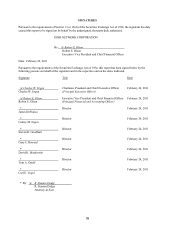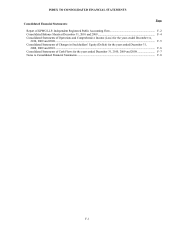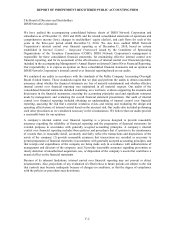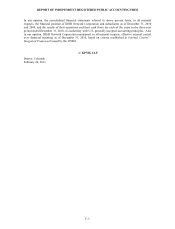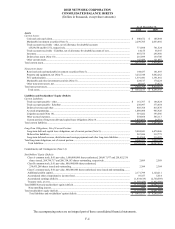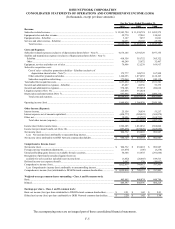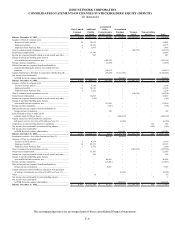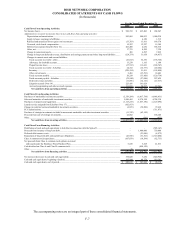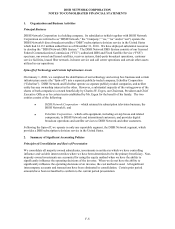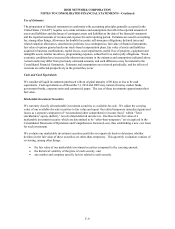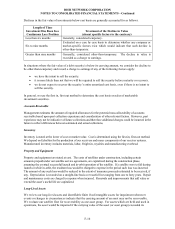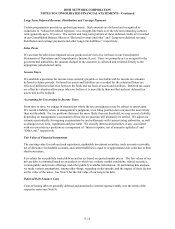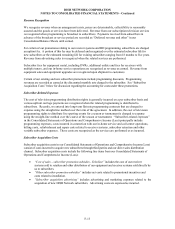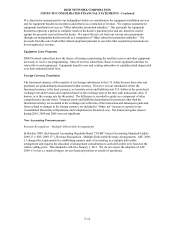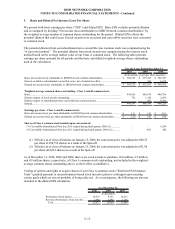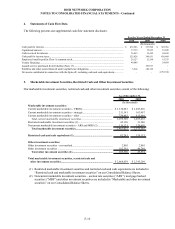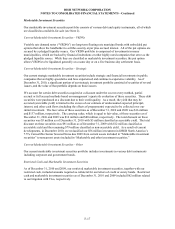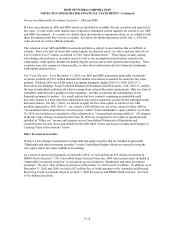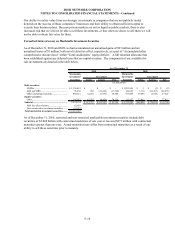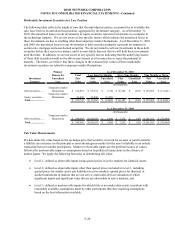Dish Network 2010 Annual Report Download - page 95
Download and view the complete annual report
Please find page 95 of the 2010 Dish Network annual report below. You can navigate through the pages in the report by either clicking on the pages listed below, or by using the keyword search tool below to find specific information within the annual report.
DISH NETWORK CORPORATION
NOTES TO CONSOLIDATED FINANCIAL STATEMENTS - Continued
F-10
Declines in the fair value of investments below cost basis are generally accounted for as follows:
Length of Time
Investment Has Been In a
Continuous Loss Position
Treatment of the Decline in Value
(absent specific factors to the contrary)
Less than six months Generally, considered temporary.
Six to nine months
Evaluated on a case by case basis to determine whether any company or
market-specific factors exist which would indicate that such decline is
other-than-temporary.
Greater than nine months Generally, considered other-than-temporary. The decline in value is
recorded as a charge to earnings.
In situations where the fair value of a debt security is below its carrying amount, we consider the decline to
be other-than-temporary and record a charge to earnings if any of the following factors apply:
• we have the intent to sell the security.
• it is more likely than not that we will be required to sell the security before maturity or recovery.
• we do not expect to recover the security’s entire amortized cost basis, even if there is no intent to
sell the security.
In general, we use the first in, first out method to determine the cost basis on sales of marketable
investment securities.
Accounts Receivable
Management estimates the amount of required allowances for the potential non-collectability of accounts
receivable based upon past collection experience and consideration of other relevant factors. However, past
experience may not be indicative of future collections and therefore additional charges could be incurred in the
future to reflect differences between estimated and actual collections.
Inventory
Inventory is stated at the lower of cost or market value. Cost is determined using the first-in, first-out method.
We depend on EchoStar for the production of our receivers and many components of our receiver systems.
Manufactured inventory includes materials, labor, freight-in, royalties and manufacturing overhead.
Property and Equipment
Property and equipment are stated at cost. The costs of satellites under construction, including certain
amounts prepaid under our satellite service agreements, are capitalized during the construction phase,
assuming the eventual successful launch and in-orbit operation of the satellite. If a satellite were to fail during
launch or while in-orbit, the resultant loss would be charged to expense in the period such loss was incurred.
The amount of any such loss would be reduced to the extent of insurance proceeds estimated to be received, if
any. Depreciation is recorded on a straight-line basis over useful lives ranging from one to forty years. Repair
and maintenance costs are charged to expense when incurred. Renewals and improvements that add value or
extend the asset’s useful life are capitalized.
Long-Lived Assets
We review our long-lived assets and identifiable finite lived intangible assets for impairment whenever
events or changes in circumstances indicate that the carrying amount of an asset may not be recoverable.
We evaluate our satellite fleet for recoverability as one asset group. For assets which are held and used in
operations, the asset would be impaired if the carrying value of the asset (or asset group) exceeded its


